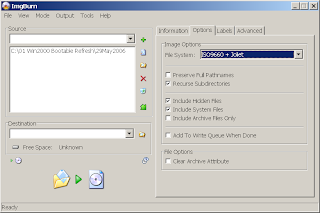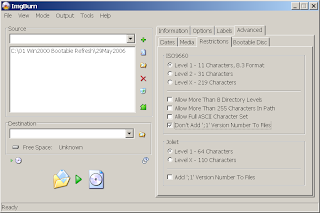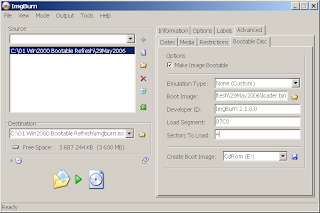http://www.imgburn.com/
To create multibootable image you will need some tools from Bart Lagerweij http://www.nu2.nu/diskemu/ Namely diskem1x.zip archive. Then you need some bootable disk images - usually these are images of 1.44Mb floppy disks.
Now prepare your folder structure to be burnt on ISO and extract the following files from diskem1x.zip archive into the root of CD:
loader.bin - used to load bigger diskem1x.bin to memory
diskem1x.bin - used to execute diskemu.cmd batch file
diskemu.cmd - main configuration file with menus
Pay attention to diskemu.cmd - it is an exemplary configuration file. It will probably work for you, but will not load anything, because it is not configured for your images. This file contains description of actions that should be taken when you press keys. Actions are actually commands to run images. Just take a look at it and you'll get an idea.
Place you images in the folder structure of your ISO, so that diskem1x.bin (the loader) could find them and edit diskem1x.cmd accordingly.
Now launch ImgBurn, choose build mode, add your directory and set options as displayed on screenshots below. In particular, set options:
- Don't Add ";1" Version Number To Files
- Make Image Bootable
- Emulation Type: None (Custom)
- Boot image:
- Sectors To Load: 4
You will probably have to repeat this instructions several tim


